When most people think of NFTs, they think of overpriced art, digital collectibles and very expensive pictures of cartoon monkeys.
But NFTs can enable all sorts of practical applications, from securing loans to AI-powered interior design. They do this by revolutionizing how people — not Big Tech — benefit from their data. Here’s why:
- Everything you care about is non-fungible.
- Digital representations of non-fungible things are useful (and common).
- Decentralizing these representations makes them vastly more useful to the end user.
Everything you care about is non-fungible
Something is fungible if it is interchangeable with and indistinguishable from other items of the same type. A fungible item can be replaced by another identical item without any loss of value, like trading a dollar for another dollar.
Fungible assets, like money or gasoline, while valuable, are typically only important to the extent they help us acquire something non-fungible (belongings, experiences).
Something non-fungible, on the other hand, is unique.
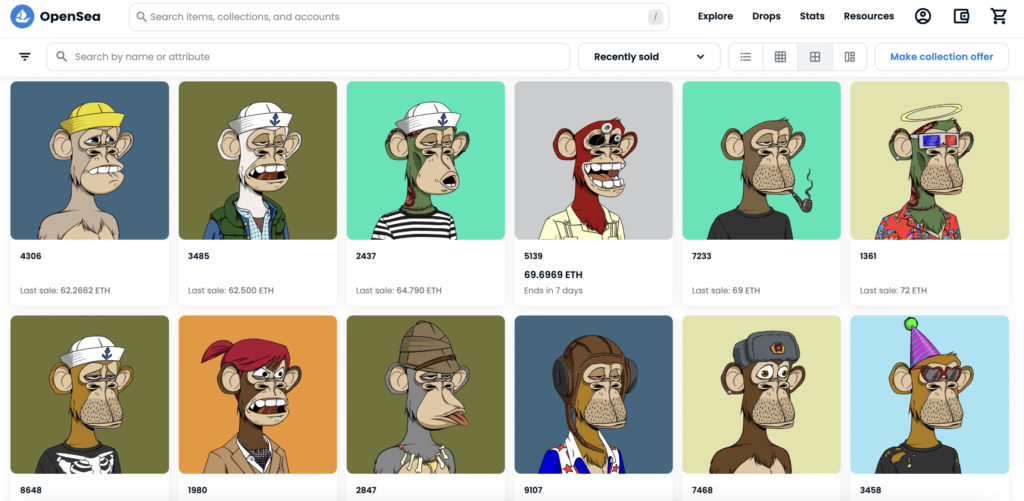
This includes your belongings, such as your home, your car, and even your cup of coffee. It includes your relationships, your body, and your preferences. Experiences, credentials, memories, and reputation are all non-fungible. Each is unique and cannot be replaced by an identical equivalent.
Even things that start out as fungible can become non-fungible. Cars of the same make, model, and year might seem fungible when they’re brand new, but if you’re buying a used car, you definitely want to evaluate the specific vehicle’s condition. You might not care which cup of coffee the barista hands you out of the same pot, but you probably don’t want to trade after the first sip.
Digital representations of non-fungible things are useful (and common)
Retailers keep records of their customers and what they buy. This helps them support buyers when something breaks, or determine what warranties are applicable. Interior designers and architects use blueprints to propose solutions within the limitations of a space. Doctors and dentists use health records to treat patients.
Many tech-enabled businesses are built on digital representations of non-fungible things. Spotify, YouTube, Netflix, and GoodReads model users’ tastes to recommend content.
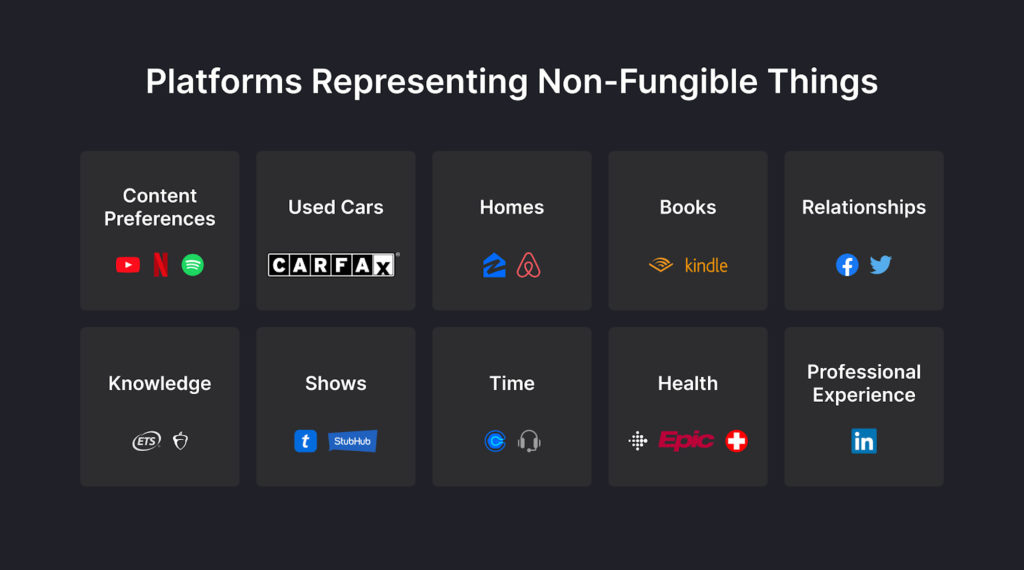
Zillow and AirBnB use real estate data to help buyers find homes and approximate prices. Facebook and Twitter map relationships to populate feeds. TicketMaster and StubHub digitally represent specific seats for unique experiences.
These digital representations allow platforms to provide services based on user data, but they don’t allow the user to leverage that data directly. This optimizes value for the platform, not the end user.
For example, I can’t use my GoodReads or YouTube history to automatically follow all my favorite creators on Twitter. I can’t use my Spotify taste model to find local events on TicketMaster. I can’t use blueprints from my home to find fitting furniture on Wayfair.
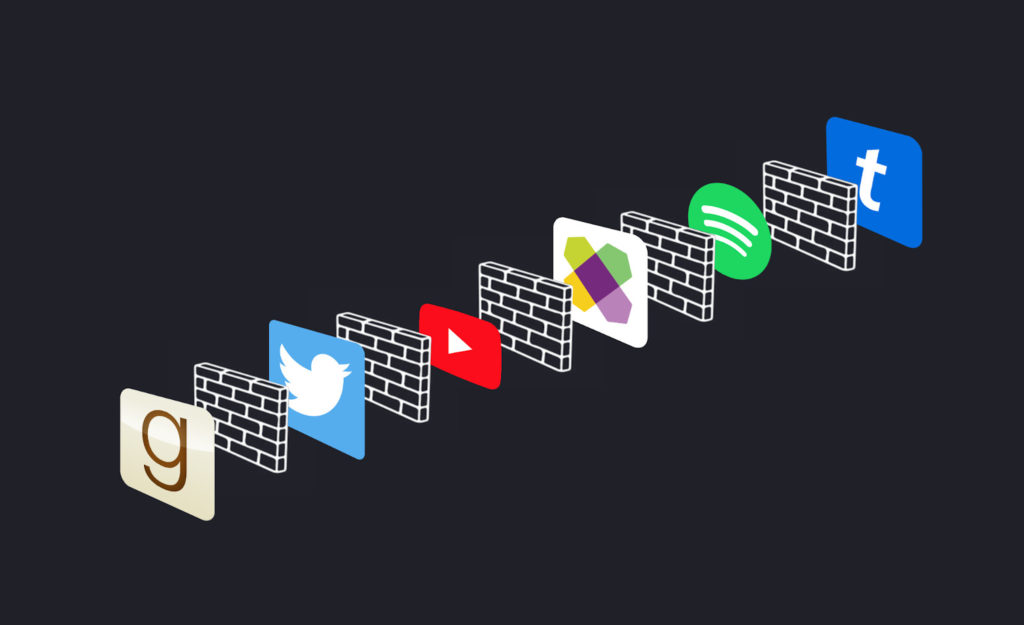
Even if users could access this data directly, it wouldn’t be very useful, because these representations aren’t standardized or portable — they’re different from provider to provider, and incompatible with other services. In most cases, the end user has no control over who or what has access.
For these digital representations to achieve their full potential, users need ownership and interoperability.
Decentralizing representations makes them vastly more useful to end users
Decentralization gives users control over their data, which creates ownership. It removes barriers to data access imposed by centralized platforms, which allows for interoperability. These properties unlock new services and capabilities for end users, upgrade the utility of the underlying non-fungible item, and enable entire ecosystems of data-driven businesses.
NFTs, or non-fungible tokens, are uniquely identifiable blockchain assets used to certify ownership and authenticity. NFTs can denote off-chain assets, like artwork, memberships, or actual land deeds.
Stored on decentralized blockchains instead of centralized databases, no one controls an NFT except its owner. Although most NFTs today are publicly visible, technologies such as secret NFTs Докази нултих знања are quickly giving owners more control over who can access their data.
Portability and ownership enable many new use cases. For example, a single NFT representing my home could contain its blueprint, location, purchase history, up-to-date photos, and other metadata. That data could be plugged into a variety of applications. I could use it to find furniture that fits in each room, to calculate property taxes, to rent my home on marketplaces, or to secure a loan.
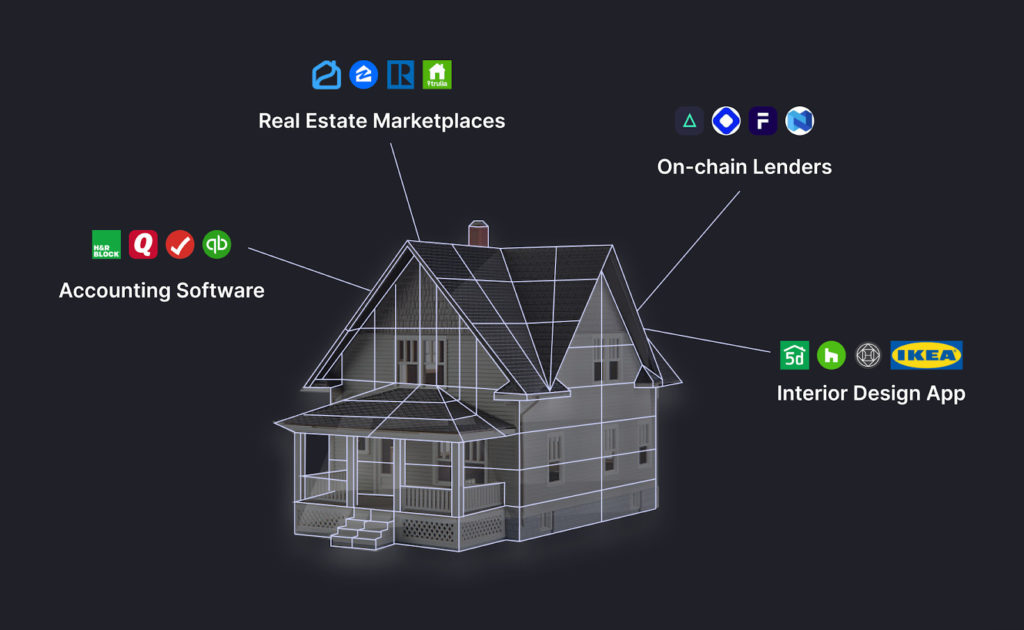
NFTs can also be combined to enable use cases that are impossible when data is siloed. Representations of our style and physical form can personalize shopping experiences. NFTs of our calendars, tastes, locations, and relationships can be combined to auto-plan personalized events for every group, or schedule dates.
Data about belongings can be used to surface qualified services and add-ons, like insurance or integrations. Credentials, schedules, and interests can be used to identify professional or educational opportunities across platforms.
User-owned data also unlocks new applications of AI. AI needs to process user data to generate user-specific solutions. For example, Вана requires a user to upload multiple photos of their face to generate a gallery of artistic portraits – without access to that data, it can’t generate relevant portraits.

As AI becomes more powerful, it will require standardized user data to generate unique solutions to unique problems. Decentralizing this data incentivizes AI-enabled startups to build highly-tailored solutions. There are many potential use cases:
- Interior design proposals based on the blueprint of your home, taste, and budget (including highly-custom AI-generated art!).
- Educational content tailored to your knowledge, goals, and learning style.
- Personalized recipes based on your health, tastes, and goals.
- Wardrobe suggestions tailored to your size and style.
- Personal AI assistants who know everything about you, your schedule, your relationships, and have full access to all of your data, but share none of it with anyone.
Startups are already building the foundations for many of these use cases:
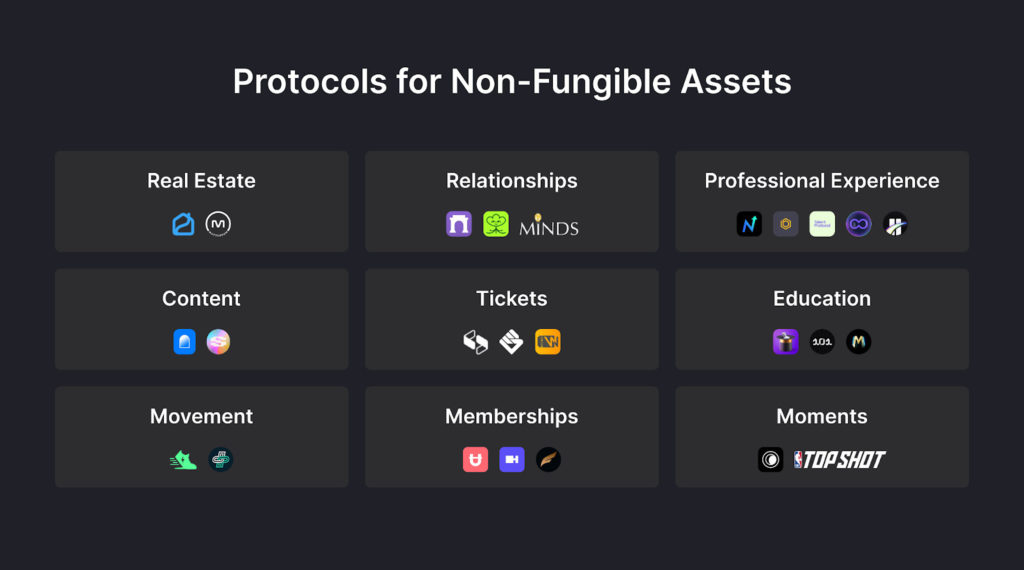
Much of this will be incredibly positive, although there may be drawbacks — we’ve already seen the echo chambers that can result from highly personalized content feeds. Advances in both technology and regulatory frameworks will be needed to ensure data isn’t accessed and copied without the NFT owner’s permission.
However, it’s worth keeping in mind that all of this data is already out there — it’s just currently controlled by platforms and service providers, instead of end users.
Тек смо почели
Everything you care about is non-fungible. Companies have been using digital representations of your non-fungible assets for years to pad their bottom lines. These centralized players lack both the incentives and the coordination to open up these representations to other data-driven systems.
Decentralization makes data vastly more useful to the end user. NFTs put data back in the hands of individuals, and incentivize the development of all kinds of new capabilities, by making digital representations more portable and accessible.
JPEGs are a proof of concept. The best is yet to come.
Добијајте најважније вести о криптовалути и увиде у току дана у пријемно сандуче сваке вечери. Претплатите се на Блоцкворкс-ов бесплатни билтен сада.
Source: https://blockworks.co/news/why-nfts-will-upgrade-everything
